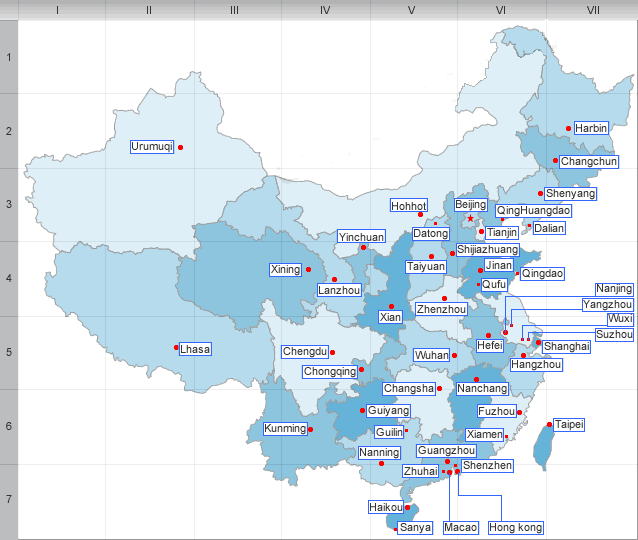Nanning Overview
Overview
The city of Nanning, whose Chinese name means "Southern Peace", is the capital of Guangxi Zhuang Autonomous Region, or Guangxi Province, for short. Nanning is located almost in the center of the province, though slightly more southerly than northerly (nearer the coast - and the Gulf of Tonkin/ the South China Sea), even if the city is almost perfectly centered, east to west, in Guangxi Province, which borders Vietnam to the southwest. The Chinese island of Hainan lies almost due south across the Gulf of Tonkin. Nanning is situated in a low-lying but hilly valley, surrounded by mountains. The southern part of the city is in fact built on the lower slopes of Mount Qingxiu.
Nanning has also been known in former times as Yong City due to its location on the northern bank of the Yong River, the principal southern tributary of the Xi River, the latter of which passes through the Guangxi Province city of Wuzhou before entering into Guangdong Province to the southeast, where it eventually empties into the Pearl River Estuary (note that "xi" means "west" while "dong" means "east", and therefore Guangdong Province lies east of Guangxi Province). The Xi River is second only in terms of volume of flow to the mighty Yangtze River.
Nanning is home to some 30 ethnic minority groups. It is also the center of Zhuang ethnic minority culture, with over 90% of China's Zhuang ethnic minority living in Guangxi Province. Nanning is filled with the ethnic flavors of the Zhuang people during the Folk Song & Folk Arts Festival, which takes place in late October or early November each year, depending on the lunar calendar. This is the best time of year to visit Nanning if you are interested in the culture and history of the Zhuang ethnic minority.
The province's other main minority groups include the Dong and the Miao, the Gin (a Vietnamese ethnic group), the Hui, the Shui, the Yao and the Yi (aka Lolo). In addition, Nanning boasts a small Christian enclave, though these are not of ethnic origin - a vestige, perhaps, of the Taiping Rebellion (1850 to 1864 - see the next paragraph). Not surprisingly, Nanning has several ethnic minority villages where the visitor can enjoy firsthand the music, dance, art - and fireworks - of the local minorities, especially during the ethnic festivals. Each of the minority groups represented here celebrates its own festival, where ritual dances and traditional ceremonies and competitions take place. In addition, the city has an Institute of Nationalities, or ethnic culture museum, that profiles the history and culture of each of the ethnic minority groups represented here.
One such ethnic minority village, Jintian Village, is the site where the Taiping Rebellion originated, which, at its height, numbered over 30 million revolutionaries who attempted to institute pervasive social reforms under the guise of a hybrid Christian rule (called the Taiping Heavenly Kingdom). Even Mao Zedung acknowledged the Taiping Rebellion as a legitimate attempt to rid the Chinese people of a corrupt, repressive feudal system. The Taiping Rebellion was the largest, most extensive uprising in Chinese History prior to the communist uprising that would eventually lead to the creation of the PRC.
| PREV:Laibin Overview | Next:Liuzhou Overview |



